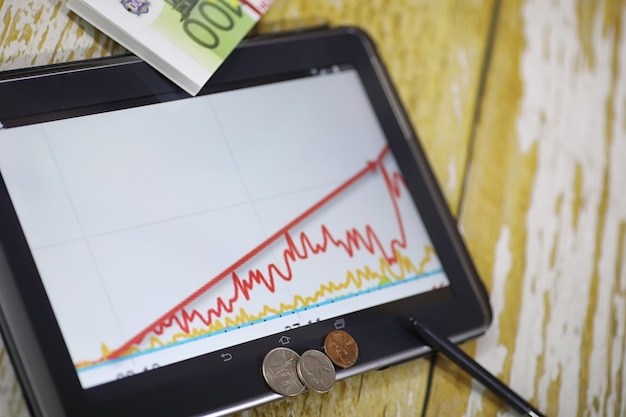Emergency Funds in 2025: How Much Do You Really Need?

Emergency funds are crucial for financial stability in 2025, providing a safety net for unexpected expenses such as job loss, medical bills, or car repairs; determining the right amount involves assessing your monthly expenses, income stability, and risk tolerance to ensure you have adequate coverage to navigate unforeseen financial challenges.
Securing your financial future requires careful planning, and at the heart of it lies the establishment of an emergency fund. The Importance of Emergency Funds: How Much Do You Really Need in 2025? is a question many are grappling with, given the uncertainties of the modern world. This guide will help you navigate this critical aspect of financial preparedness.
Understanding the Basics of Emergency Funds
An emergency fund is your financial safety net, designed to cover unexpected expenses without derailing your long-term financial goals. It’s a pool of readily available money that you can tap into when life throws you a curveball.
What Constitutes an Emergency?
Defining what qualifies as an emergency is crucial. It’s not just about unexpected expenses, but also expenses that are critical and unavoidable. Knowing the difference can prevent you from depleting your fund unnecessarily.
Why Emergency Funds Are More Important Than Ever
In an era marked by economic uncertainty and rapid changes, having an emergency fund offers peace of mind and financial resilience. It protects you from debt and allows you to handle crises without significant financial stress.

- Sudden job loss or reduction in income
- Unexpected medical bills
- Urgent home or car repairs
- Natural disasters or other unforeseen events
Understanding these basics underscores the importance of building and maintaining a robust emergency fund.
Calculating Your Monthly Expenses
Determining the right amount for your emergency fund starts with understanding your monthly expenses. This involves tracking where your money goes each month and identifying essential spending.
Tracking Your Spending Habits
Use budgeting apps, spreadsheets, or traditional pen and paper to monitor your income and expenses. Knowing where your money goes is the first step toward understanding how much you need for emergencies.
Distinguishing Between Needs and Wants
Identify essential expenses like rent, utilities, groceries, and transportation. Differentiate these from non-essential wants to accurately calculate your core monthly financial needs.
- Rent or mortgage payments
- Utilities like electricity, water, and gas
- Groceries and essential household supplies
- Transportation costs, including car payments and fuel
By meticulously tracking and categorizing your expenses, you can determine the minimum amount needed to cover your essential needs during an emergency.
Assessing Your Income Stability
Another critical factor in determining the size of your emergency fund is assessing the stability of your income. This involves evaluating the security of your job, potential for income fluctuations, and any other sources of income you can rely on.
Evaluating Job Security
If you work in a stable industry with solid job security, you might need a smaller emergency fund. However, if your job is at risk due to industry trends or company performance, a larger fund is recommended.
Considering Income Fluctuations
Freelancers, contractors, and those in commission-based roles should factor in income fluctuations. During lean months, your emergency fund will need to cover the shortfall to maintain financial stability.

Factoring in Additional Income Sources
If you have additional income sources like investments, rental properties, or side hustles, you might need a slightly smaller emergency fund. These additional streams can help supplement your income during a crisis.
A thorough assessment of your income stability is vital in determining how large your emergency fund should be.
Setting a Target Amount: The 3-6-Month Rule
A common guideline for emergency funds is the 3-6-month rule. This suggests saving enough to cover three to six months’ worth of essential expenses. However, the right amount depends on your individual circumstances.
Understanding the 3-Month Minimum
A 3-month emergency fund is suitable for those with stable jobs, multiple income sources, and low-risk lifestyles. It provides a basic cushion for short-term financial setbacks.
Aiming for 6 Months or More
If you have a less stable job, fluctuating income, or significant financial responsibilities, aiming for a 6-month (or even longer) emergency fund is advisable. This offers greater protection against prolonged financial hardship.
Adjusting for Personal Circumstances
Consider your risk tolerance, family responsibilities, and overall financial goals. A larger emergency fund might be necessary if you have dependents, health issues, or significant debt.
- Job security and industry stability
- Income stability and potential for fluctuations
- Personal risk tolerance and financial responsibilities
- Access to other financial resources and support
Tailoring your emergency fund to your specific circumstances ensures it provides adequate protection against financial surprises.
Strategies for Building Your Emergency Fund
Building an emergency fund requires discipline and strategic planning. Start by setting realistic goals, automating your savings, and finding ways to cut expenses.
Setting Realistic Savings Goals
Break down your target amount into smaller, manageable goals. Focus on saving a certain amount each month, and track your progress to stay motivated. Celebrate milestones to reinforce your commitment.
Automating Your Savings
Set up automatic transfers from your checking account to a dedicated savings account. Automating your savings ensures consistency and prevents you from forgetting to save.
Cutting Expenses and Finding Extra Income
Identify areas where you can cut expenses, such as dining out, entertainment, or subscription services. Consider pursuing side hustles or part-time work to boost your income and accelerate your savings.
Implementing these strategies will help you build your emergency fund more quickly and effectively.
Where to Keep Your Emergency Fund in 2025
Choosing the right place to keep your emergency fund is crucial for ensuring accessibility and safety. High-yield savings accounts, money market accounts, and short-term CDs are popular options.
High-Yield Savings Accounts
These accounts offer competitive interest rates while allowing easy access to your funds. Look for accounts with no monthly fees and FDIC insurance for added protection.
Money Market Accounts
Money market accounts provide a balance between liquidity and earning potential. They typically offer higher interest rates than regular savings accounts but may have minimum balance requirements.
Short-Term Certificates of Deposit (CDs)
CDs offer fixed interest rates for a specific period, such as six months or one year. While they may offer higher returns, accessing your funds before the maturity date may incur penalties.
- Accessibility: Ensure you can quickly access your funds in an emergency.
- Interest Rates: Look for accounts that offer competitive interest rates.
- Security: Choose accounts that are FDIC-insured to protect your savings.
Selecting the right account ensures your emergency fund is both safe and easily accessible when you need it most.
Maintaining and Replenishing Your Fund
Once you’ve built your emergency fund, it’s essential to maintain and replenish it after use. This involves regular reviews, avoiding unnecessary withdrawals, and prioritizing replenishment.
Regularly Reviewing Your Needs
As your life circumstances change, so might your emergency fund needs. Review your fund annually to ensure it still aligns with your current expenses and income stability.
Avoiding Unnecessary Withdrawals
Only use your emergency fund for true emergencies. Avoid tapping into it for non-essential expenses, as this can deplete your savings and leave you vulnerable to future financial shocks.
Prioritizing Replenishment After Use
If you use your emergency fund, make replenishing it a top priority. Adjust your budget to allocate more funds toward savings until you reach your target amount.
Maintaining and replenishing your emergency fund ensures it remains a reliable safety net for years to come.
| Key Point | Brief Description |
|---|---|
| 💰 Emergency Fund Basics | A safety net for unexpected expenses, essential for financial resilience. |
| 📊 Calculating Expenses | Track spending, differentiate needs from wants to determine the required amount. |
| 💼 Income Stability | Assess job security and income fluctuations to adjust fund size accordingly. |
| 🎯 Target Amount | Aim for 3-6 months of expenses, adjusting based on personal circumstances. |
Frequently Asked Questions (FAQ)
▼
An emergency fund provides a financial cushion to cover unexpected expenses, preventing debt and reducing stress during crises such as job loss or medical emergencies.
▼
A general guideline is to save 3-6 months’ worth of essential living expenses. The specific amount depends on your job security, income stability, and risk tolerance.
▼
High-yield savings accounts and money market accounts are good options. They offer easy access to your funds while earning a competitive interest rate.
▼
Set realistic savings goals, automate your savings, and identify areas to cut expenses. Consider increasing your income with side hustles to accelerate the process.
▼
Prioritize replenishing your emergency fund as soon as possible. Adjust your budget to allocate more funds toward savings until you reach your target amount again.
Conclusion
Building and maintaining an emergency fund is a cornerstone of financial stability. By understanding your expenses, assessing your income stability, and setting realistic goals, you can create a robust safety net that protects you from life’s unexpected challenges in 2025 and beyond.





